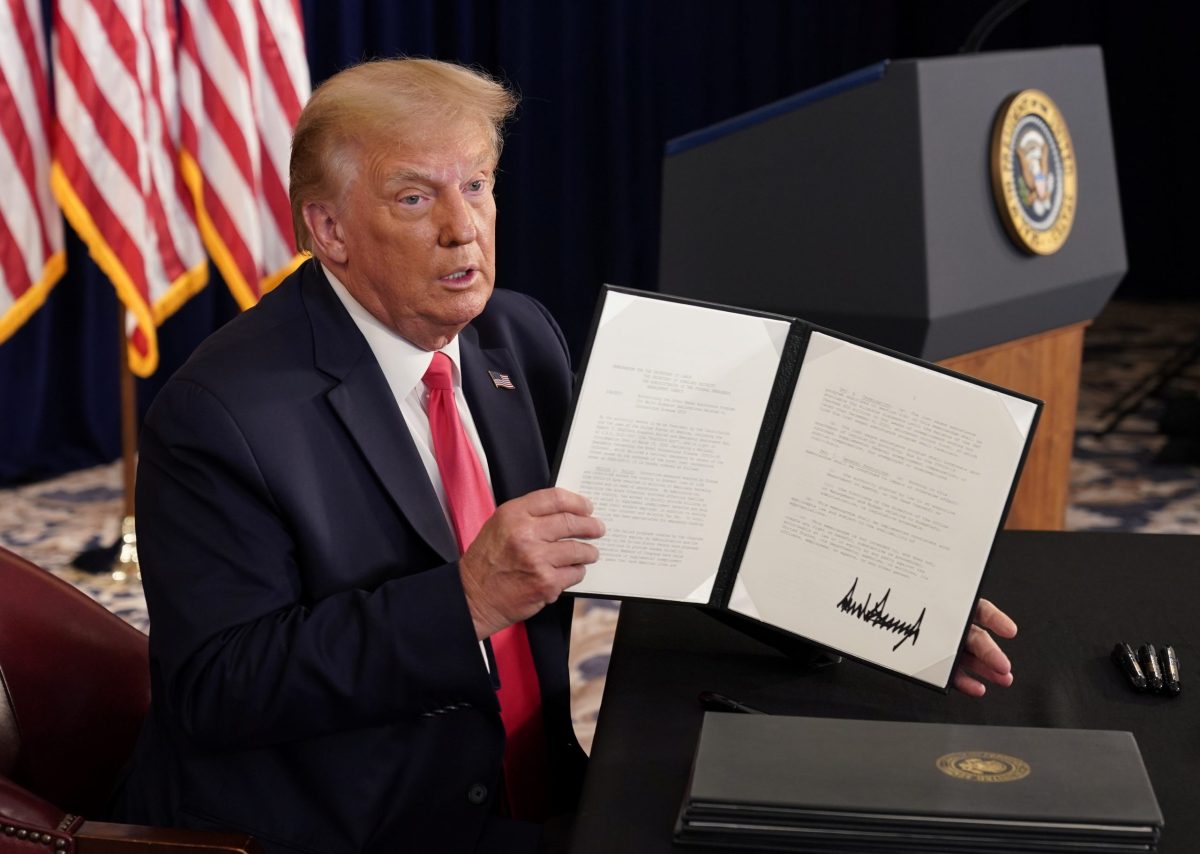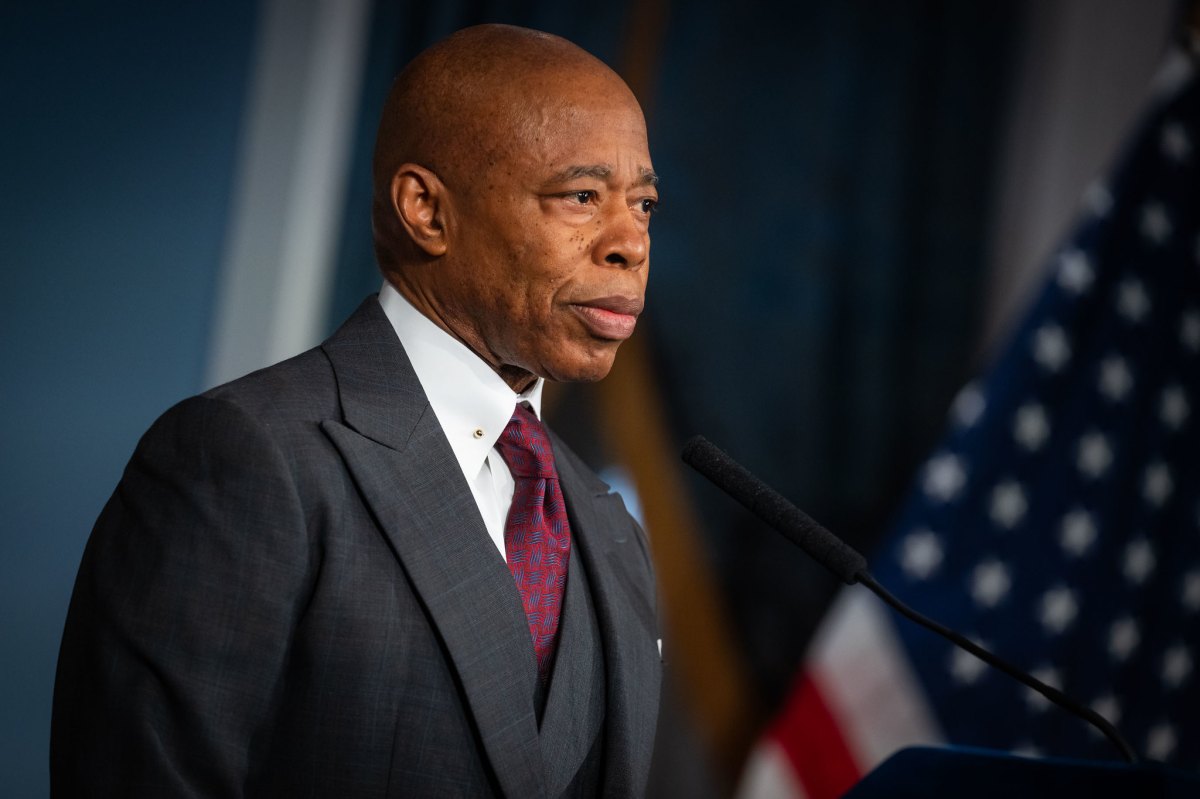BY JEFF MASON
President Donald Trump signed executive orders on Saturday partly restoring enhanced unemployment payments to the tens of millions of Americans who lost jobs in the coronavirus pandemic, as the United States marked a grim milestone of 5 million cases.
Some of the measures were likely to face legal challenges, as the U.S. Constitution gives Congress authority over federal spending.
Negotiations broke down this week between the White House and top Democrats in Congress over how best to help Americans cope with the heavy human and economic toll of the crisis, which has killed more than 160,000 people across the country.
Trump said the orders would provide an extra $400 per week in unemployment payments, down from the $600 per week bonus passed earlier in the crisis.
“This is the money they need, this is the money they want, this gives them an incentive to go back to work,” Trump said of the lower payments. He said 25% of it would be paid by states, whose budgets have been hard hit by the crisis.
Republicans have claimed that higher payments were a disincentive for unemployed Americans to try to return to work, though economists, including Federal Reserve officials, disputed that assertion.
Trump’s move to take relief measures out of the hands of Congress drew immediate criticism from some Democrats.
“Donald Trump is trying to distract from his failure to extend the $600 federal boost for 30 million unemployed workers by issuing illegal executive orders,” said Senator Ron Wyden, the top Democrat on the Senate Finance Committee. “This scheme is a classic Donald Trump con: playacting at leadership while robbing people of the support they desperately need.”
The Democratic-majority House of Representatives passed a coronavirus support package in May which the Republican-led Senate ignored.
Democratic presidential candidate Joe Biden called the orders a “series of half-baked measures” and accused Trump of putting Social Security “at grave risk” by delaying the collection of payroll taxes that pay for the program.
Trump also said he was suspending collection of payroll taxes, which pay for Social Security and other federal programs, an idea that he has repeatedly raised but has been rejected by both parties in Congress. He said the suspension would apply to people making less than $100,000 per year.
His orders would also stop evictions from rental housing that has federal financial backing and extend zero percent interest on federally financed student loans.
Trump initially played down the disease’s threat and has drawn criticism for inconsistent messages on public health steps such as social distancing and masks.
He spoke to reporters on Saturday at his New Jersey golf club, in a room that featured a crowd of cheering supporters.
Far apart
Nearly two weeks of talks between White House officials and congressional Democrats ended on Friday with the two sides still about $2 trillion apart.
House Speaker Nancy Pelosi had pushed to extend the enhanced unemployment payments, which expired at the end of July, at the previous rate of $600 as well as to provide more financial support for city and state governments battered by the crisis.
Pelosi and Senate Minority Leader Chuck Schumer on Friday offered to reduce the $3.4 trillion coronavirus aid package that the House passed in May by nearly a third if Republicans would agree to more than double their $1 trillion counteroffer.
White House negotiators Treasury Secretary Steven Mnuchin and Chief of Staff Mark Meadows rejected the offer.
The $1 trillion package that Senate Majority Leader Mitch McConnell unveiled late last month ran into immediate opposition from his own party, with as many as 20 of the Senate’s 53 Republicans expected to oppose it.
Trump did not rule out a return to negotiations with Congress.
“I’m not saying they’re not going to come back and negotiate,” he said on Saturday. “Hopefully, we can do something with them at a later date.”
Democrats have already warned that such executive orders are legally dubious and would likely be challenged in court, but a court fight could take months.
Trump has managed to sidestep Congress on spending before, declaring a national emergency on the U.S.-Mexico border to shift billions of dollars from the defense budget to pay for a wall he promised during his 2016 election campaign.
Congress passed legislation to stop him, but there were too few votes in the Republican-controlled Senate to override his veto – a scenario that would likely play out again with less than 90 days to go before the Nov. 3 presidential election.
Unclear on unemployment
Trump’s order cuts enhanced federal unemployment benefits – a lifeline for the tens of millions of Americans thrown out of work during the pandemic – from $600 to $400 per week. Democrats had been lobbying to extend the original $600 a week enhanced benefits, which expired on July 31.
Trump proposes taking most of the money from the coffers of the Federal Emergency Management Agency – $44 billion, according to the order – with 25% of the money coming from states.
It’s not clear how Trump will convince state governments, whose revenues have been hard hit by the crisis, to pony up their proposed share.
Trump called the reduced payments “generous.”
Payroll tax cut
Trump’s first order waives the payroll tax that funds Social Security in a bid to inject extra money directly into salaried employees’ pockets. Trump has been pushing the idea for a while but it has found little support in Congress from Democrats or his fellow Republicans.
The executive order says the cut comes into effect on Sept. 1, but Trump said it “most likely” would be retroactive to Aug. 1 and translate into “bigger paychecks for working families.”
Evictions
Trump’s order protecting homeowners and renters from evictions is unlikely to face a challenge from Democrats; indeed, House of Representatives Speaker Nancy Pelosi this week encouraged the move. But it isn’t clear how it will be executed.
The order directs authorities to provide “temporary financial assistance” to renters and homeowners “struggling to meet their monthly rental or mortgage obligations.”
Even Trump seemed a little hazy on the order’s ultimate effects, saying “we don’t want people being evicted and the act that I am signing will solve that problem – largely, hopefully, completely.”
Student loans
Trump said that interest on student loan payments – frozen since March – would be suspended until the end of the year.


































